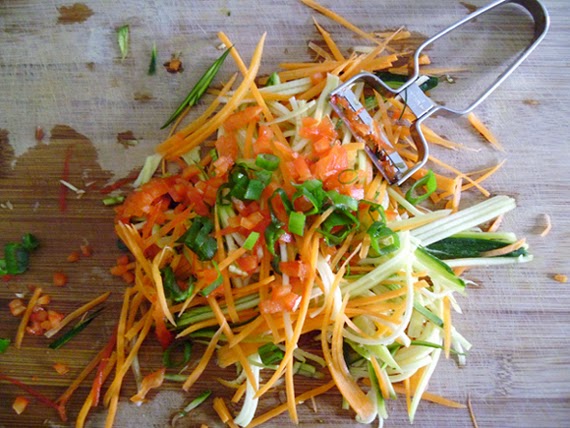Hi again Fodmappers
I've noticed that there seems to be a lot of confusion surrounding gluten and whether going gluten-free can help reduce the symptoms of IBS, so that's what I want to talk about today. I also want to look at why you need to avoid wheat, barley and rye as part of a low-fodmap diet, and, finally, why some gluten-free products are not suitable for a low-fodmap diet. But first lets look at the difference between gluten and FODMAPs.
Gluten vs FODMAPs
Gluten is a protein (or more accurately a combination of two proteins) found in grains, particularly so in wheat but also in rye and barley, and it is this which gives dough it's stretchy quality. If you have bought flour for baking bread you will probably have bought a 'strong flour' as this type contains more gluten than the flour you might use for cakes or biscuits as bread making needs the elasticity that gluten provides. It's gluten that is a factor in coeliac disease.
Approximately 1 in 100 people in the U.K have coeliac disease. 'Coeliac disease is not a food allergy or intolerance, it is an autoimmune disease. In coeliac disease, eating gluten causes the lining of the small intestine to become damaged.' (1) People who have coeliac disease need to avoid ingesting even the smallest amount of gluten as to do so can cause further damage to the lining of the gut.
Fodmaps, on the other hand, are a group of carbohydrates found, not only in grains, but also in fruit, vegetables, nuts, pulses and dairy produce. 'Current research strongly suggests that this group of carbohydrates contributes to IBS...' (2)
IBS is much more common than coeliac disease, affecting between 1 in 4 and 1 in 10 people at any given time. (3) Though it is a chronic condition, it is a functional disorder. That is to say, the problem is in the way the gut functions, rather than in any damage to the gut itself.
Though wheat, barley and rye contain gluten they are also high-fodmap, and this seems to be where the confusion arises.
If you have IBS you may have discovered that you feel better if you eat gluten free products rather than wheat-based breads, biscuits, cakes, pastas and cereals. However, this is likely to be because, by choosing gluten free, you are also removing high-fodmap grains (such as wheat, rye and barley) from your diet.
A Gluten Free Caution
But if you have IBS, you do not need to avoid gluten, you need to avoid fodmaps. In fact fodmappers need to be careful when choosing 'gluten-free' as these products are designed for people with coeliac disease not IBS. Just because they are gluten-free doesn't mean they are necessarily low-fodmap. Remember fodmaps are found in more than just grains, and gluten-free products may also contain soya flour, apple fibre or inulin (from chicory) all of which are high-fodmap.
So the short answer to the question, 'can a gluten free diet help IBS?', is yes. But it has nothing to do with gluten. I hope that's cleared things up a bit?
'Til next time Fodmappers - Stay Fabulous. x
1. https://www.coeliac.org.uk/coeliac-disease/myths-about-coeliac-disease/
2. http://www.med.monash.edu/cecs/gastro/fodmap/
3. http://www.aboutibs.org/site/what-is-ibs/facts/









